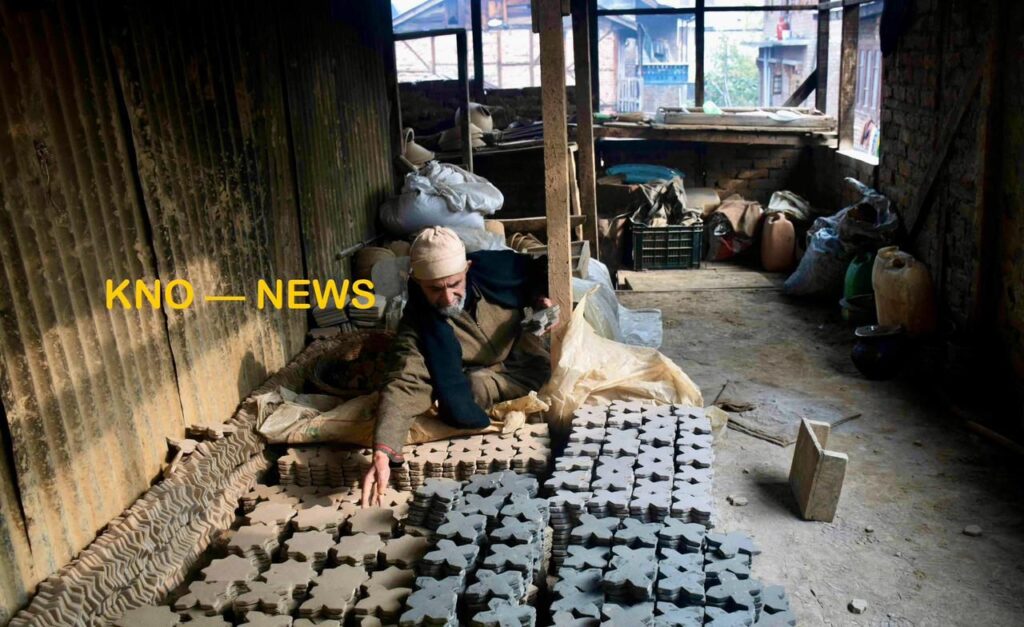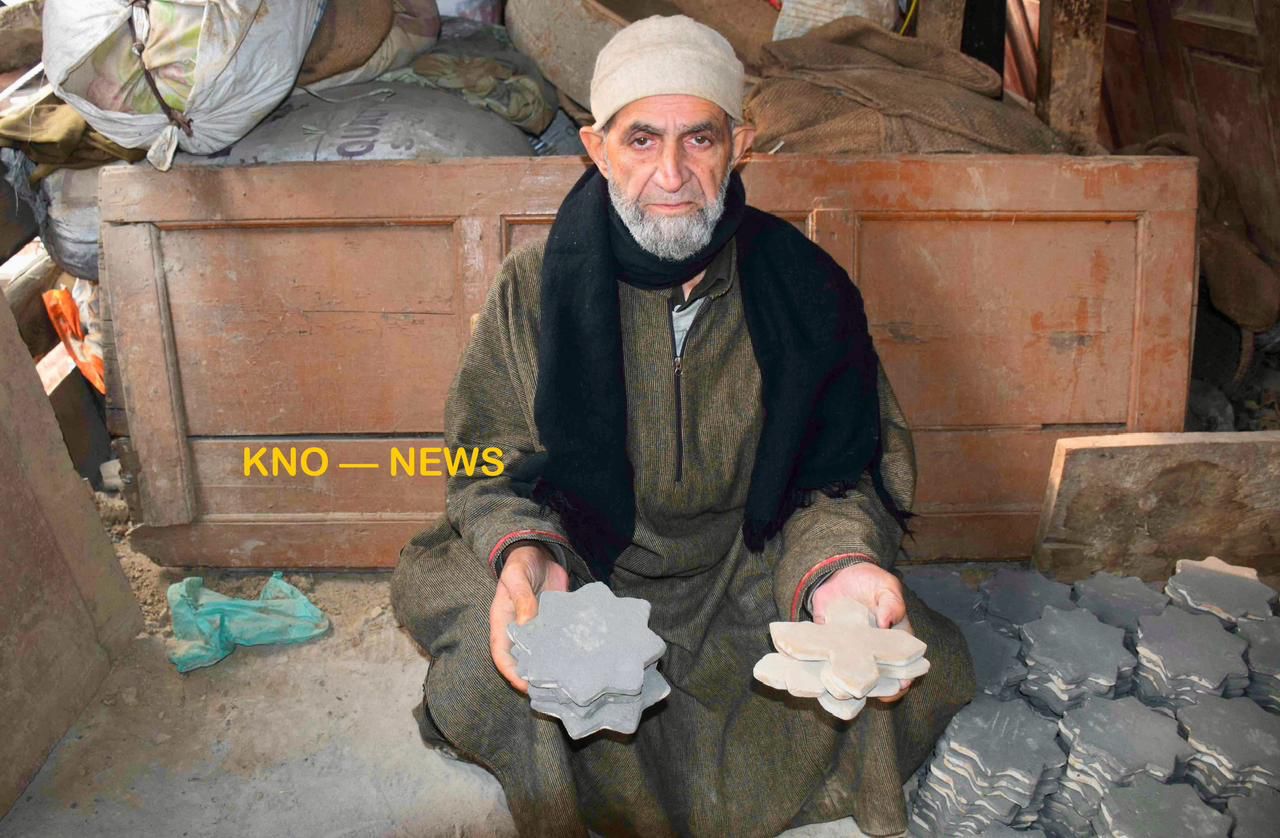Journey through the narrow lanes of Khanyar, Srinagar, where 75-year-old artisan Ghulam Mohammad Kumar fights against time to preserve the ancient craft of Khanyari tiles. The last custodian of this fading art, Kumar’s earnest efforts face insurmountable challenges, including the lack of space to pass on his intricate skills to the next generation.
By Jahangeer Ganaie
In the heart of Khanyar, Srinagar, the ancient craft of Khanyari tiles, a unique form of glazed pottery, teeters on the precipice of extinction. Ghulam Mohammad Kumar, a 75-year-old artisan and the sole custodian of this dying art, has devoted six decades to perfecting the intricate techniques passed down by his father. Despite his passion and commitment, Kumar faces insurmountable challenges, particularly the lack of space to impart his invaluable skills to the next generation.
Once a ubiquitous feature in Kashmiri architecture, these tiles, now considered old-fashioned, have fallen out of favor due to dwindling demand and neglect from authorities. Kumar’s earnest attempts to secure support from the government, including Promised Land for a dedicated workshop, remain unfulfilled. As Khanyari tiles slip into obscurity, Kumar, driven by a fervent desire to preserve this cultural legacy, implores for urgent government intervention to ensure the survival of a craft that once adorned the floors of every Kashmiri home.

Despite the efforts of the lone craftsman of glazed tiles, popularly known as Khanyari tiles, this art is on the verge of extinction as no one has learned this dying craft.
Ghulam Mohammad Kumar (75), a resident of Khanyar Srinagar and the sole craftsman of this dying art has been making every possible effort to pass on these skills. However, he is facing challenges due to the unavailability of space.
Kumar said he has been associated with this art for the last 60 years, having learned it from his father, and currently, he is the only craftsman practising this art.
This art used to be widespread throughout Kashmir in the past; however, due to less demand and little attention from the government, most artists have shifted to other work, he said.
Consequently, these tiles, considered an essential part of exquisite Kashmiri architecture depicting the region’s rich craftsmanship, are no longer in vogue, he lamented.
“Earlier, there was good demand, but it has declined now. I can hardly make 100 tiles a day, as some families still use these tiles, now considered old-fashioned,” Kumar said, adding that his tiles have been used in Mumbai and other parts of India, as well as hundreds of places in Kashmir for decoration.
Ghulam Mohammad, who takes great pride in his work, is committed to preserving this dying art, hoping that somebody will learn this craft and carry forward this legacy.
“I aim to pass on this art, as I want to teach it to more and more people, but due to the unavailability of space, I am unable to teach this culturally significant art to anyone,” he added.
Kumar said many young people visit his workshop, eager to learn this art, but due to limited space, he is unable to pass on this art. “This is quite disheartening.”
Kumar said he has approached concerned authorities several times seeking support to save this dying art. However, as of now, he has only received promises that are yet to be fulfilled on the ground.
Last year, government officials promised me that a piece of land would be provided to set up a workshop and teach interested youth, but nothing has been done on the ground so far, he said.
He said while exhibitions have been conducted for its revival, many more things need to be done. Government intervention is crucial for the revival of this dying art, he said, expressing hope that the government will take immediate steps in this regard.
Notably, Khanyari tiles were once used in every house in Kashmir to decorate the floor, and many artisans made a livelihood by creating glazed pottery products. However, now it is on the verge of extinction.


Comments are closed.